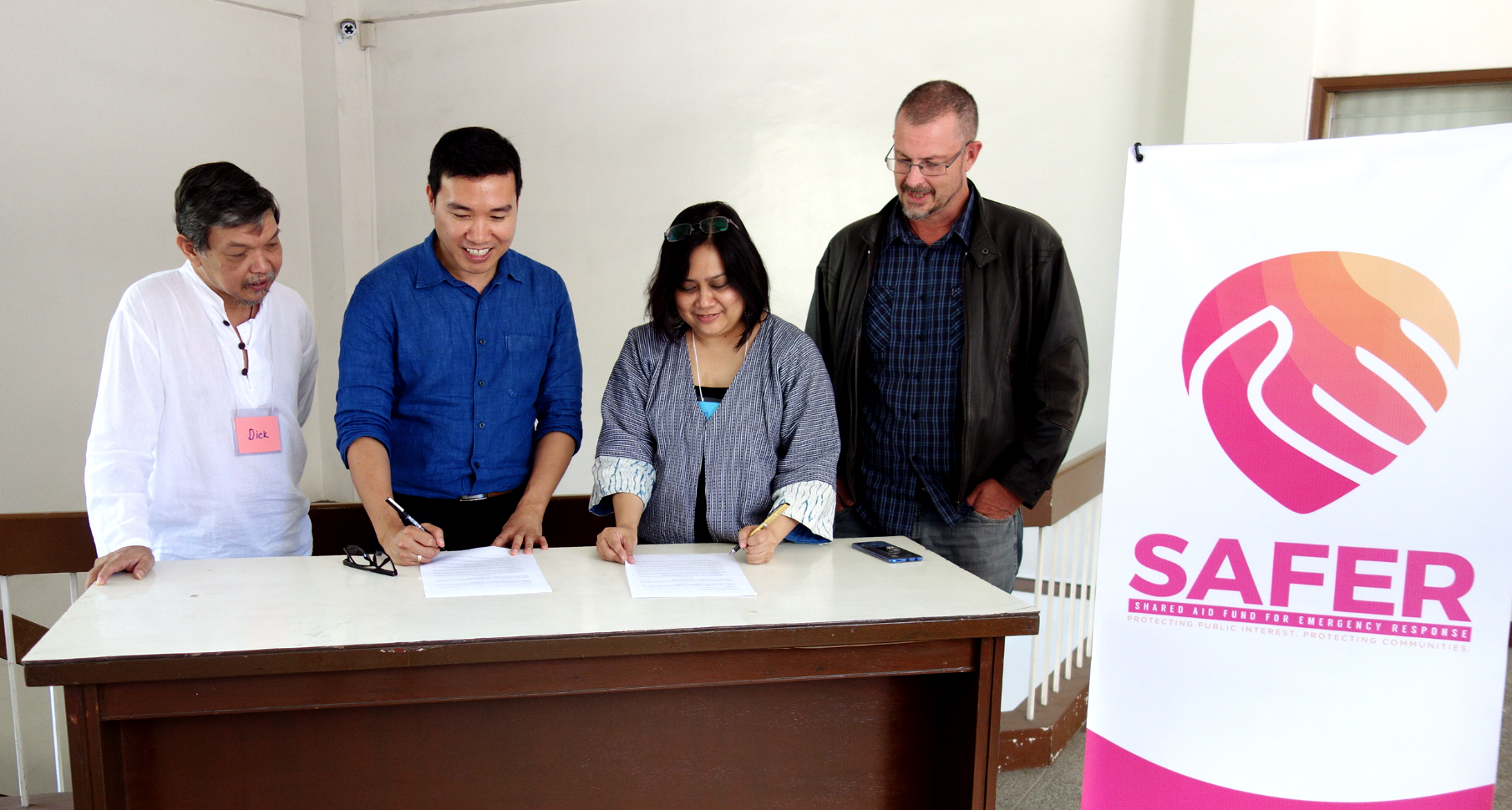Category: Microfinance
-
Strengthening farmer organizations Mindanao to alleviate poverty and accelerate peace process
Mindanao is considered one of the wealthiest islands in the Philippines in terms of natural resources. It boasts plenty of natural resources, producing 40% of the country’s food needs (OECD, 2013). Further, one-third of the island’s land area is considered agricultural (Francisco, 2017). Despite these considerable assets, the island has continuously been a place of…
-
LENDING A HAND, BUILDING CAPACITIES: SEDPI conducts trainings on product design and delinquency management with ARBOs
“We must all be solution-oriented,” said Florence Adviento, one of the trainers from SEDPI, at the beginning of the discussions. With the statement above as tone-setter, the Social Enterprises Development Partnerships Inc. (SEDPI) successfully conducted a 3-day series of trainings with 38 Agrarian Reform Beneficiaries Organizations (ARBOs) coming from provinces of Sarangani, Sultan Kudarat,…
-

Vince Rapisura is SAFER Foundation’s first brand ambassador
Quezon City –Financial Wealth Expert and Host of Usapang Pera Vince Rapisura signed a contract with SAFER Foundation last February 19, 2019 to become its first official brand ambassador. Also present during the event are SAFER Board member Benedict Balderama (Executive Director, PHILSSA), Executive Committee Members Roselle Rasay (Executive Director, CODE-NGO) and Kevin Lee (Convenor, HRC). As a DRRM and development practitioner,…
-
SEDPI conducts training on Cooperative Standards for Small Business Corporation
Small Business Corporation (SBC) commissioned Social Enterprise Development Partnerships, Inc. (SEDPI) to conduct training on Cooperative Standards for its management staff from Northern Luzon on December 11, 2018 in Baguio City. SEDPI Senior Program Officers, Ms. Florence Adviento and Ms. Francesca Gacer-Magallon, facilitated the one-day training for thirty (30) participants. The training discussed the different…
-
DAR Awards SEDPI Project on Poverty Alleviation and Peace Process in Minadanao
On December 28, 2018, the Department of Agrarian Reform (DAR) awarded a multi-million project to SEDPI to implement a component of the Italian Assistance to Agrarian Reform Communities (ARC) Development Support Program (IARCDSP). DAR implements the IARCDSP as one of its foreign-assisted projects which is funded under the loan agreement executed with the Government of…
-
SEDPI Clinches WOCCU Project on Financial Inclusion
On January 7, 2019, the Worldwide Foundation for Credit Unions awarded SEDPI a contract to conduct a demand-side research with credit union members of select credit unions (CUs) or credit cooperatives in the Philippines. The Worldwide Foundation for Credit Unions, the social impact affiliate of the World Council of Credit Unions (WOCCU), partnered with the…
-
Innovations and Trends in Inclusive Finance 2018
SEDPI, in partnership with Ateneo de Manila Microfinance Capacity Building Program, is mounting a two-day training event entitled “Innovations and Trends in Inclusive Finance”. The course will present recent trends on financial product design and delivery; innovations in operational policies; institutional policies of successful microfinance institutions; and lessons learned on how to cope with disasters and…
-

Farmers train on microfinance
Farmers belonging to Agrarian Reform Beneficiaries Organizations (ARBOs) in Batangas were recently trained on microfinance to improve their organizations’ social and financial performance. The training entitled Fundamentals and Methodologies of Microfinance and Character and Capacity-Based Lending, was conducted by the Department of Agrarian Reform (DAR) in partnership with the Social Enterprise Development Partnerships Incorporated (SEDPI).…
-
PALFSI’s Inspiring Road to Recovery
by Angelo Naidas People’s Alternative Livelihood Foundation of Sorsogon, Inc. (PALFSI) started its microfinance operation in 1997, servicing the rural areas of Sorsogon. By 2003, the organization experienced growth with outreach of 10,000 clients in 15 municipalities in the province of Sorsogon. In 2005, PALFSI partnered with Ayudahan Livelihood Foundation of Zamboanga (ALFZI). The two…
